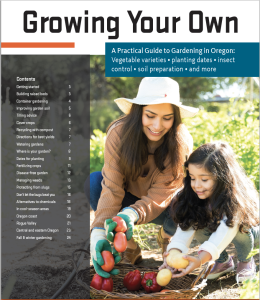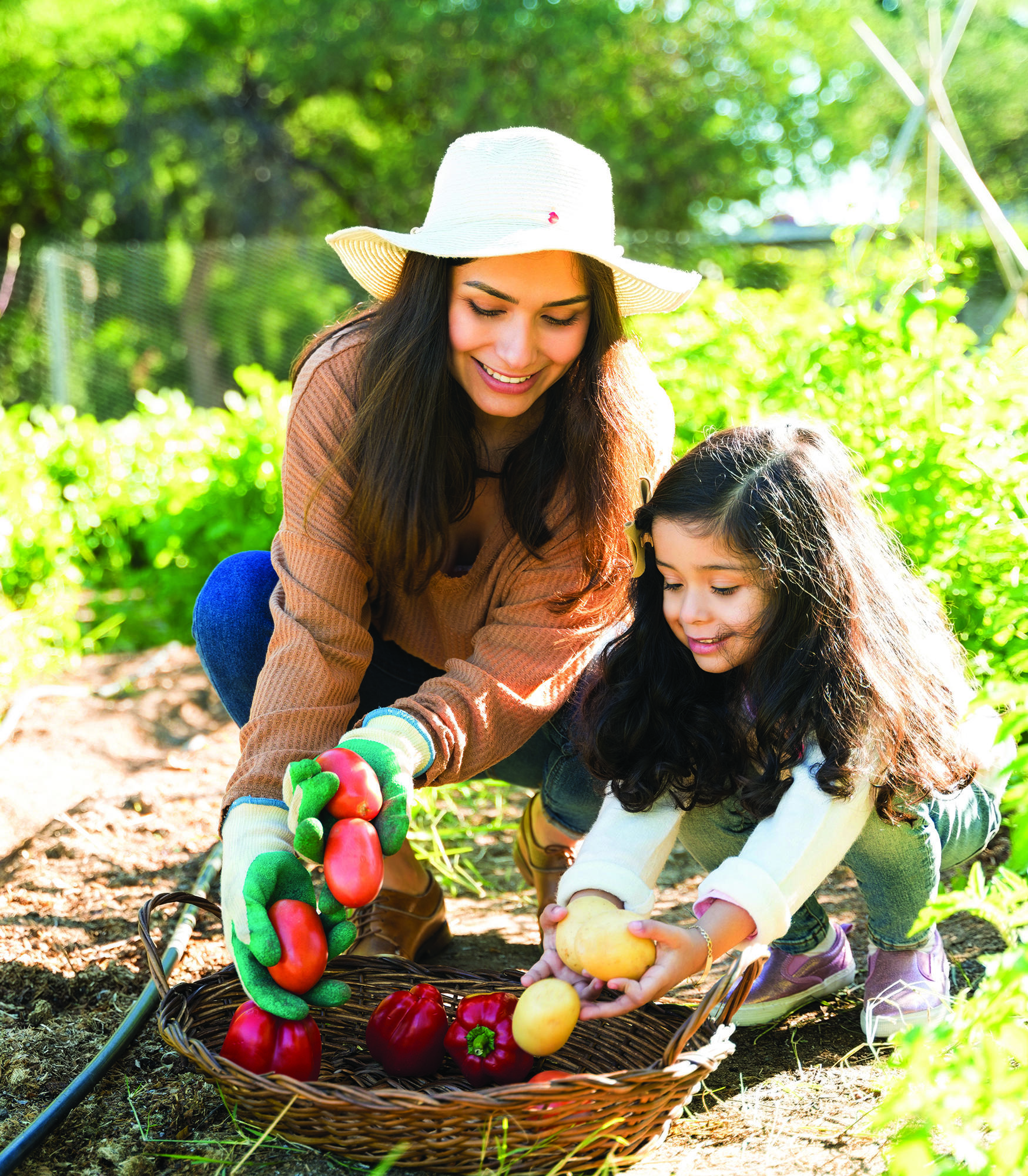“Growing Your Own,” a popular gardening publication from Oregon State University Extension Service, is now available in Spanish.
 This 24-page, magazine-style guide was introduced in 1991 and has helped teach thousands of Oregonians how to grow a vegetable garden. But until last August, it wasn’t accessible for gardeners who wanted information in Spanish.
This 24-page, magazine-style guide was introduced in 1991 and has helped teach thousands of Oregonians how to grow a vegetable garden. But until last August, it wasn’t accessible for gardeners who wanted information in Spanish.
“There’s been an overall effort in the horticulture program to be of better service to Spanish-speaking communities,” said Gail Langellotto, OSU Extension Master Gardener statewide coordinator, professor in the College of Agricultural Sciences and lead author of “Growing Your Own.” “We have hired faculty who speak Spanish who have long lamented the few or no supporting documents for the classes and presentations they give. Faculty asked for the translation, and it aligned with our mission to serve all gardeners.”
“Growing Your Own,” long a staple of Extension’s catalog of educational publications, has evolved in content and format to remain current and meet the needs of the times. The new Spanish version continues Extension’s commitment to expanding language access and accessibility, along with other recent actions like translating the OSU Extension website into Spanish and starting a Spanish Facebook page.
Spanish is the second-most spoken language in Oregon. In addition to the bilingual print version of “Growing Your Own,” the full content is available online in both languages on mobile-friendly webpages.
Diana Reyes, an OSU Extension communications specialist with Extension Communications who is fluent in English and Spanish, was publishing manager and editor for the Spanish version of “Growing Your Own” and said it was an exacting project that wasn’t just about translation.
“We had to be mindful about the content,” Reyes said. “It had to make sense to both English and Spanish speakers. Some things didn’t translate in a straightforward way. We had to find those things. We also had to be intentional about graphics and represent with culturally appropriate images and colors.”
OSU Extension Master Gardeners seek to recruit future master gardener volunteers from the Spanish-speaking community and other underserved populations, so it’s important to have accessible materials for classes and events.
“We have a mandate from OSU and from the U.S Department of Agriculture to be of broad service to all of Oregon’s gardeners,” Langellotto said. “Gardening is such a fundamental activity for physical health, mental health and connecting to other people. If you come from a different region, there can be real challenges, depending on where you settle. If you come from a tropical or semi-tropical warm region, there’s a learning curve in how to be successful. We want to help people to be successful as fast as we can to help them plant, grow and harvest food.”
Reyes said it’s essential for OSU Extension to represent different languages and diversity. When she took on the project, it was important to her to show gardening is accessible to everyone.
“It’s a big goal not just for the university, but for our division and personally for me, too,” Reyes said. “Spanish is a priority when we do content. It’s important that everyone feels seen. If you see someone like me doing something, you think, ‘I can do it, too.’ If you want to participate, it’s possible. It’s a way to show, yes, you can do whatever you set our mind to do. Just go for what you want.”

